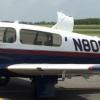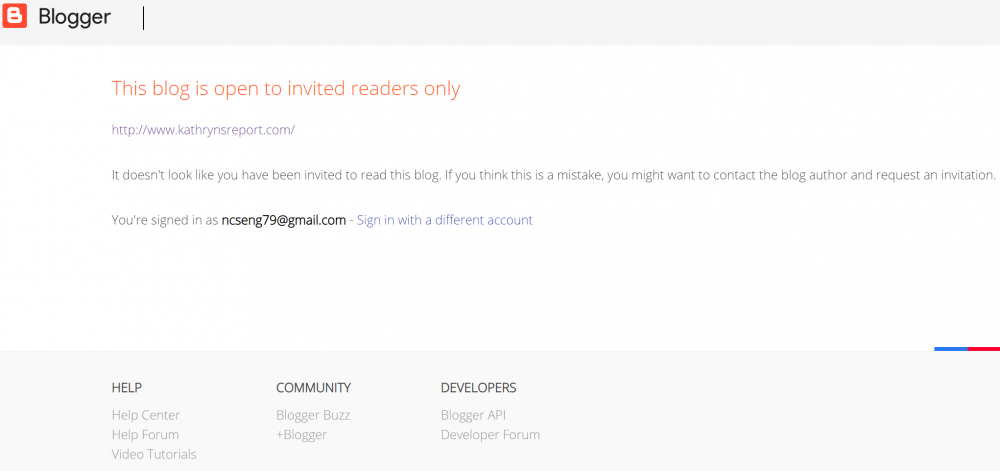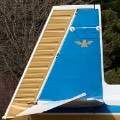Search the Community
Showing results for tags 'accident'.
-
I used to be able to call up the web page for Kathryn's report but now get the following. Anyone else follow and have the same issue? Anyone found the solution?
-
This post serves to post the 2018 Mooney Fatal Accidents so we can learn and discuss prevention methods in an effort to lower future fatal accidents for our community. I'll break down the info as best I can, and I will highlight possible causes if they are not identified by the NTSB. In 2018, there were seven fatal accidents resulting in 9 fatalities. 02/2018 - CFIT (final report) - The pilot's failure to maintain clearance from terrain during a visual approach in dark night visual meteorological conditions, which resulted in controlled flight into terrain. 03/2018 - Loss of aircraft control (final report) - The pilot's exceedance of the airplane's critical angle of attack during takeoff, which resulted in an aerodynamic stall/spin. Report speculates that a possible factor was the pilot's seat slide back. There is not enough evidence to support that claim but it is something that has caused Mooney crashes. 04/2018 - Loss of aircraft control (final report) - The pilot's failure to maintain adequate airspeed while departing in instrument meteorological conditions, moderate turbulence, and low-level wind shear, which resulted in the airplane exceeding its critical angle of attack and a subsequent aerodynamic stall. *My take: this could have also been spatial disorientation which drove loss of aircraft control. 08/01/2018 - Loss of aircraft control (final report) - Loss of aircraft control in the final turn. The pilot's exceedance of the airplane's critical angle of attack while maneuvering for landing, which resulted in a cross-control aerodynamic stall, spin, and impact with terrain. Contributing to the accident was the flight instructor's delayed remedial action in preventing the stall. 08/11/2018 - Loss of aircraft control (final report) - Loss of aircraft control in the final turn. The pilot's exceedance of the airplane's critical angle of attack during the landing approach as a result of his diversion of attention after a series of non-essential aircraft systems became inoperative following the failure of the engine-driven vacuum pump, which resulted in an aerodynamic stall/spin. 09/2018 - Loss of aircraft control (final report) - The pilot’s failure to maintain aircraft control during a go-around due to his premature flap retraction, which resulted in an aerodynamic stall and subsequent loss of control. 11/2018 - Collision with terrain (final Report) - for reasons that could not be determined based on the available information. Contributing to the accident was the pilot's poor preflight planning and poor decision to depart on the accident flight. Recommendations/takeaways for us: 1. For 2018, Loss of aircraft control accounts for 71% of Mooney fatalities. This is statistically significant and much higher than 2017. 2. Task management and misprioritization of a non-critical system malfunction are contributing factors in two of these accidents. Systems knowledge and a good scan of available instrument data can help pilots correctly identify the malfunction and categorize it as a "land as soon as possible" vs "land as soon as practical." For us at Mooneyspace, when is the last time you read the POH and reviewed critical systems such as your electric, fuel, and vacuum setup? If you can't remember, please set aside some time to study. 3. For those of us who are CFI/CFII, the 08/01/18 crash should serve as a reminder to know when a student/pilot has exceeded their limits and take aircraft control prior to exceeding yours. Everyone has techniques, but for those who are new CFIs, realize be conservative in your approach. Sometimes, pilot error can put the plane in such a position that there is no time for a verbal correction, and a physical intervention is required to maintain a flying attitude. 4. 2018 saw a 42% higher accident rate compared to 2017 Mooney fatal accidents. Also of note, none of the fatal accidents in 2018 were related to catastrophic mechanical failure such as engine or structural failure. Lack of proficiency, lack of currency, and a breakdown in instrument crosscheck led to loss of situational awareness for almost all of these accidents. For those who fly regularly for travel, set aside some time to practice approaches and landings, or practice instrument approaches. For those have large breaks in flying, spend the time with a CFI and focus on tasks you are rusty or weak at and build your proficiency and confidence. These are just my observations and thoughts on how to help our community analyze accidents and how to incorporate what we learn into our safety culture.
- 9 replies
-
- 7
-

-
- mooney accidents
- fatal
-
(and 3 more)
Tagged with:
-
Recall this thread back from April 2018, when IFR pilot took off from Petaluma, CA in IFR conditions and came down a mile from the airport. We now have the NTSB factual report out here https://app.ntsb.gov/pdfgenerator/ReportGeneratorFile.ashx?EventID=20180407X35303&AKey=1&RType=Final&IType=FA Although the pilot made some mistakes, including telling ATC he was going to depart RWY 29, but was holding at RWY 11 and then departed RWY 11 after getting his release and void time. Pilot didn't fly the ODP and instead climbed to about 300' before turning left and climbing into the fog (per witness). But apparently what brought the plane down was water in the fuel, not CFIT and the plane came down at a very steep angle burying the engine in 3' of mud. Investigators found approx a 50-50 mixture of water and fuel in the fuel divider. They also provided a picture of the left fuel cap showing cracking in the outer o-ring. No mention was made of the inner o-rings but did mention the right cap was thermally damaged (post crash fire). More about the water from the report: "Another witness reported that the accident airplane landed at O69 around 1645 the day before the accident and taxied to the fuel island. He stated that he helped the pilot obtain fuel, observed him sump the airplane's fuel tanks after refueling, and instructed him where to park for the evening. He stated that the accident pilot queried a FedEx pilot on the appropriate instrument departure procedure for runway 29...." So we know the pilot was observed sumping the tanks after refueling the day before departure, but we don't really know if he sumped the tanks again before departure after the plane had been out in the rain. But if he had, he probably would have found the water in the fuel since it brought the plane down very quickly after departure. However, the NTSB doesn't assign a cause to the accident - its only a "Factual" report. There is no greater risk of water in the fuel than after our plane has been sitting on the ramp in the rain.
-
The final report on Dr. Moir's fatal crash in September 2015 has been released. AvWeb's Summary: A leaking oxygen hose fitting likely led to the fatal crash of a turbonormalized Mooney M20 Acclaim off the coast of Atlantic City on Sept. 10, 2015. Dr. Michael Moir, a dentist from Gaylord, Michigan, was the only one aboard the aircraft, which flew on autopilot without contact with ATC for more than two hours at 25,000 feet before descending to the ocean near Atlantic City, New Jersey. Moir was on his way to a Mooney owners safety conference and the NTSB speculated he did everything right to ensure a safe flight. He was still wearing his oxygen mask at the time of the crash but the technical fault made it worthless and he likely became hypoxic shortly after reaching altitude, the report says. Investigators found that a fitting connecting an oxygen line to the regulator on the tank was loose. It may have been missed at an earlier annual and when Moir activated the oxygen system as he climbed to altitude it likely quickly drained the tank. Moir read back a clearance to 25,000 about 16 minutes after he took off and was never heard from after that. Two F-16s were scrambled but the Mooney crashed before their pilots spotted it. The NTSB said the duration of the flight was consistent with the aircraft draining one of the aircraft's two fuel tanks on the flight. NTSB: https://app.ntsb.gov/pdfgenerator/ReportGeneratorFile.ashx?EventID=20150910X75635&AKey=1&RType=Final&IType=LA
-
The news just broke that Fat Albert (The U.S Navy Blue Angels C130) will not be performing at EAA Air ventures Oshkosh this year due to a nation wide grounding of the aircraft. Does anyone have insight on this issue? I assume this has something to do with the accident a few weeks ago that left many dead.
-
I don't know if this has been posted before. I just saw it.
- 6 replies
-
- 3
-

-
- pilot error
- crash
-
(and 1 more)
Tagged with:
-
In the March 1 issue of Gene Benson's Vectors for Safety, Gene laments that he is: ...very tired of reruns. No, I am not talking about TV shows. I spend plenty of time reading accident reports and I have not seen any really new programming in a very long time. In one accident report after another, pilots follow the same old tired scripts with only slight variations in the details. I could understand this if the pilots involved were new and inexperienced, not having the benefit of what is well-known about accident prevention. But that is usually not the case. We very frequently see highly experienced, knowledgeable, respected pilots showing up in the wrong column of statistics. The easy explanation is to blame overconfidence and complacency or an attitude of invulnerability. But doing some hard examination of a significant number of accidents, including accidents in which I have had personal friends killed, I am convinced that there is more going on. I think a deeper look into our humanness might reveal some explanations. He goes on to explain that pilots should think about the psychology behind accidents and he gives an example of what is known as choice blindness, which I will bet any pilot with a couple of hundred hours has probably experienced--I know I have. Most of the time we get away with it and Gene notes how a tail wind can be a validator. Enough of a tail wind and we get a pass for a bad descision. The hard part is overcoming our own humanity, working past the psychology that is trying to undermine us. Frankly, the best solution is to train and train hard. Frankly, just never quit training. When you are in the left seat with a CFII on your right, you immediately enter into the trainee consciousness. The downside of it is that you might get the feeling that if anything goes wrong you are covered. After all, you have god as your co-pilot, right? We could discuss the merits and demerits of that sort of thinking, but I'd rather concentrate on the upside. The upside is that you are on your best behavior. You damn well better go item-by-item through that checklist. Why aren't you dead on that altitude? You know the FAA allows 200 feet, but you also know your CFII only allows 50. Yeah, things are different when he's there. So, why not fly like he is always there?











